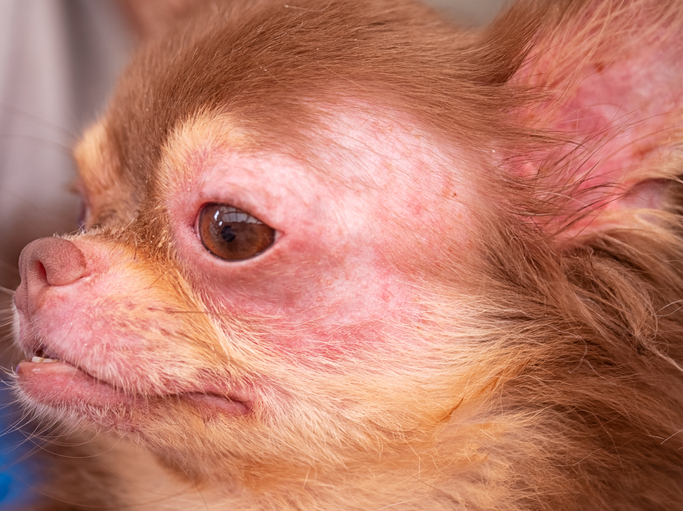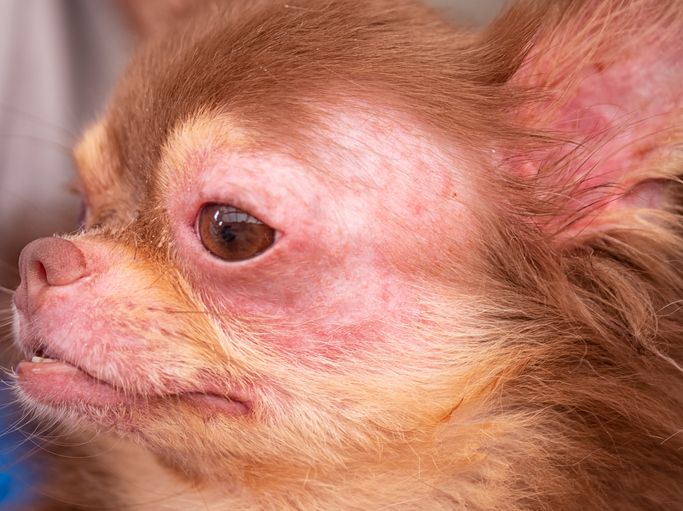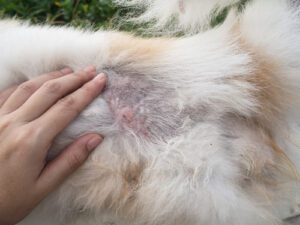There are many causes that can lead to the development of mange in dogs. Mange is a very serious condition that can have a negative impact on your dog’s life. This article will discuss the symptoms of a dog with mange, as well as the treatment. Mange can be a very difficult condition to diagnose and treat, so be sure to watch for symptoms and contact your veterinarian if you suspect your dog may have contracted mange.
Mange is caused by mites that burrow under the skin. The most common symptom of mange is hair loss, followed by scaly skin. and poor condition of the coat. Treatment of mange starts with shampooing and bathing to remove scurf and mange debris, then application of a topical medication. If nothing happens in a week or two, you may need to start treatment with oral medications.
Keep reading to learn more about mange and how it can affect your dog, symptoms, treatments, and how to prevent canine mange.
What is Mange?
Mange is a skin disease that is caused by mites. The symptoms of mange in dogs can range from mild to severe. In the more serious cases, your dog may lose hair and have crusting and oozing sores on the skin. Your dog may also develop scabs and patches of thickened, dry skin (lichenification).
Symptoms of Mange in Dogs
Infected animals are often very itchy, which can lead to self-trauma or scratching, leading to open wounds on the skin. Infected animals may also have a chronic cough or shortness of breath due to lung involvement with the infection.
Symptoms to look out for include:
- Itching and scratching
- Hair loss
- Scabs and Sores
- Thickened, crusty skin
- Redness and inflammation of the skin

Causes of Canine Mange
Mange is a skin disease that is caused by different types of mites. The most common type is the Sarcoptes scabiei, which can affect all animals (BMC).
There are two major forms of mange in dogs, but sarcoptic mange is the most common type. This type of canine mange can be transmitted to humans and pets alike, so it’s important to take precautions and avoid contact with any infected animals if possible.
Sarcoptic mange is a highly contagious skin disease caused by the Sarcoptes scabiei mite (AKC). It is characterized by intense itching and the development of crusts and scabs on the skin.
Demodectic mange, on the other hand, is caused by the Demodex mite and is not considered contagious. It is characterized by the development of bald spots and reddened irritated skin.
The symptoms of canine mange vary from animal to animal and depend on the severity of the infection. Some animals may not show any symptoms at all while other animals will have more severe symptoms like hair loss or skin lesions.
Diagnosing Mange in Dogs
The most common type of mange in dogs is called sarcoptic mange, which is caused by the Sarcoptes scabei mite. The symptoms are red patches on the skin and hair loss. Dogs with this type of mange also have intense itching and scratching, which can lead to open sores and secondary bacterial infections which are fairly easy to see and detect.
Demodectic mange is a skin condition caused by the Demodex mite (VCA Animal Hospitals). It is characterized by hair loss, itchiness, and redness. The best way to detect demodectic mange is to have your pet examined by a veterinarian. They will likely perform a skin scraping to look for the mites.
If you suspect your dog has sarcoptic mange, then you should take them to your vet for a diagnosis as soon as possible to avoid complications and secondary infections.
Treatment of Mange in Dogs
The treatment of mange in dogs is a difficult process, and it can be hard to tell whether or not your dog has the condition. The condition is caused by microscopic mites that burrow into the skin and cause intense itchiness and irritation. It’s important to know how to treat your dog’s mange because if left untreated, the animal can develop serious skin conditions like secondary infections and hair loss.
There are many steps you can take to treat your dog’s mange, but one of the most important is making sure that you have a vet who will work with you on a treatment plan for your pet. Your vet will be able to help you figure out what type of mange your dog has and recommend a course of action for treatment.

Prevention of Mange in Dogs
One way to prevent mange in dogs is to use a topical medication that kills the mites on the skin. Another way to prevent mange in dogs is by using preventive medication that kills the mites before they infect the animal’s skin.
Conclusion
It is important for pet owners to be aware of the symptoms for mange in dogs. The most common strain of mange that affects dogs is called sarcoptic mange, or canine scabies. This type of mange is caused by a parasitic mite that burrows under the skin and lays eggs. A dog can contract this type of mange from other infected animals, or from contact with someone who has a scabies infection. Symptoms of mange in dogs include hair loss, skin lesions, and a rash. Treatment of mange starts with shampooing and bathing to remove scurf and mange debris, then application of a topical medication.
If you have any questions about your dog’s health, please call us at (303) 424-4439 or schedule an appointment with us online!





